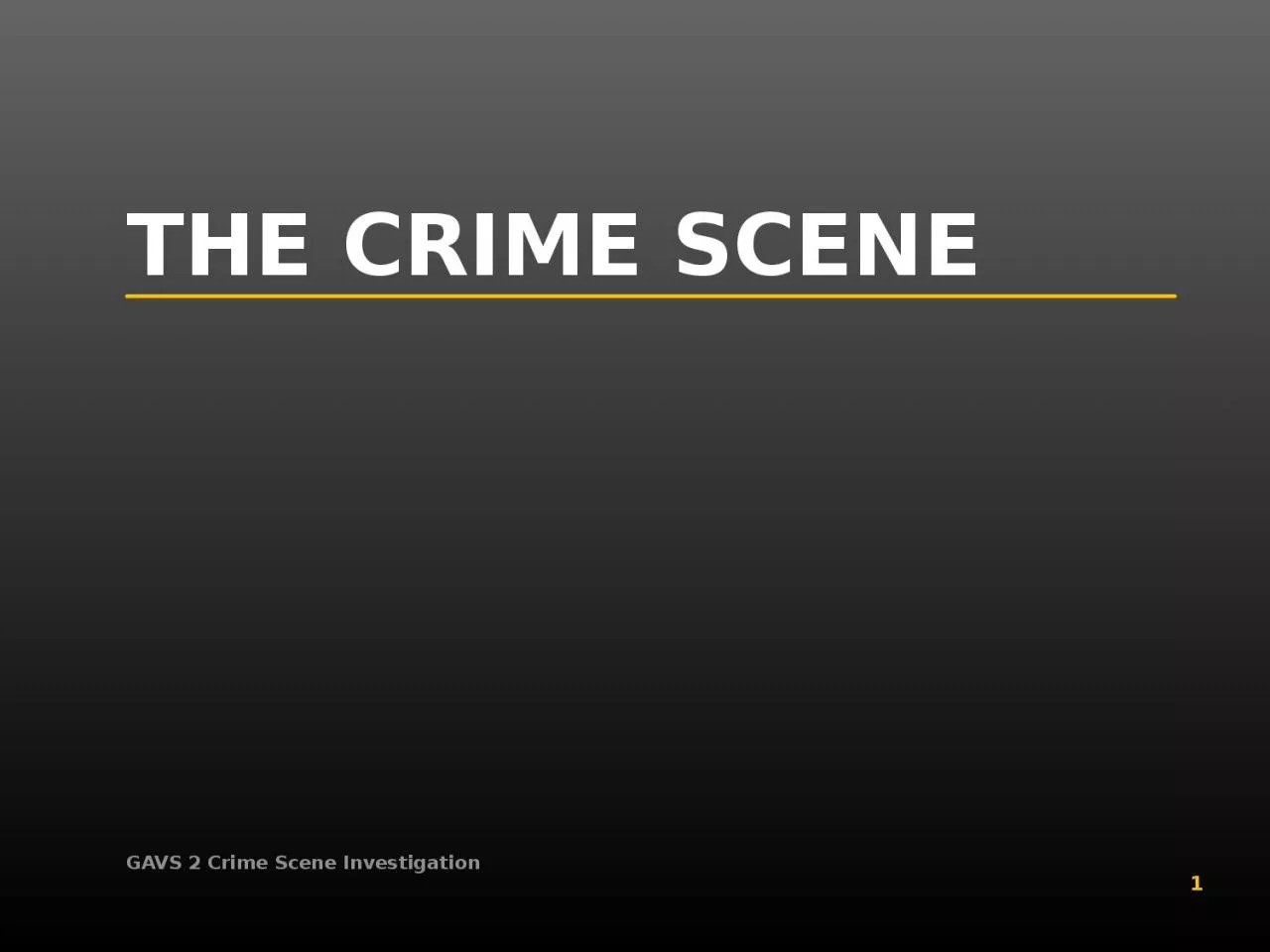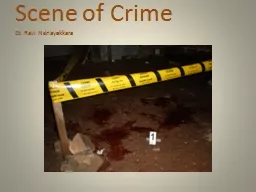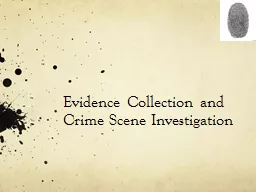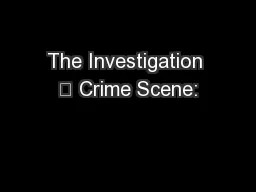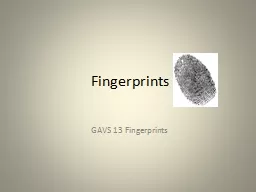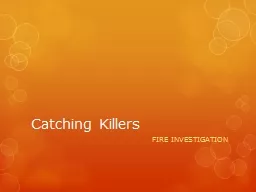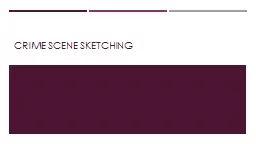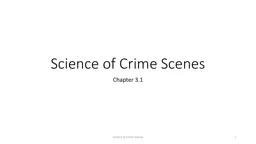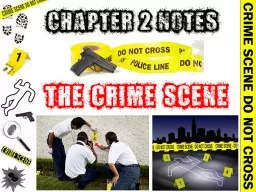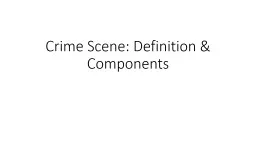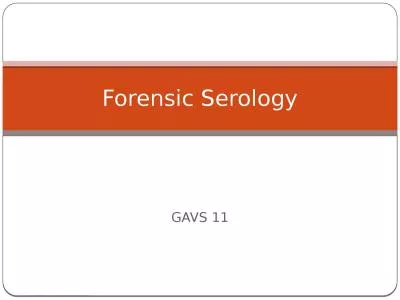PPT-THE CRIME SCENE GAVS 2 Crime Scene Investigation
Author : CuteAsACupcake | Published Date : 2022-07-28
1 SFS1 Students will recognize and classify various types of evidence in relation to the definition and scope of Forensic Science b Distinguish and categorize physical
Presentation Embed Code
Download Presentation
Download Presentation The PPT/PDF document "THE CRIME SCENE GAVS 2 Crime Scene Inves..." is the property of its rightful owner. Permission is granted to download and print the materials on this website for personal, non-commercial use only, and to display it on your personal computer provided you do not modify the materials and that you retain all copyright notices contained in the materials. By downloading content from our website, you accept the terms of this agreement.
THE CRIME SCENE GAVS 2 Crime Scene Investigation: Transcript
1 SFS1 Students will recognize and classify various types of evidence in relation to the definition and scope of Forensic Science b Distinguish and categorize physical and trace evidence eg ballistics drugs fibers fingerprints glass hair metal lip prints soil and toxins . and . Evidence Collection. Physical Evidence. Any and all objects that can establish that can establish that a crime has or has not been committed or can link a crime and its victim or perpetrator. In order to be useful it must be collected, preserved and properly analyzed by forensic experts. Dr. Ravi Nanayakkara. Contents. Definition of a scene of crime. Legal authority and relevant sections of CPC. Preparation for the scene. Duties of the Forensic Pathologist. Medico legal issues. What is a Scene of Crime ?. and . Evidence Collection. Physical Evidence. Any and all objects that can establish that can establish that a crime has or has not been committed or can link a crime and its victim or perpetrator. In order to be useful it must be collected, preserved and properly analyzed by forensic experts. Law Enforcement I. 2. Copyright and Terms of Service. Copyright © Texas Education Agency, 2011. These materials are copyrighted © and trademarked ™ as the property of the Texas Education Agency (TEA) and may not be reproduced without the express written permission of TEA, except under the following conditions:. Objective: Differentiate between the different types of . evidence. Edmond Locard . (1877-1966). Locard’s Principle. : . There always an exchange or transfer of material when two objects come into contact. . The place or site where the crime took place.. Arriving at the Crime Scene. When officers arrive at the crime scene, they have three tasks to perform:. . Assist injured people and call an ambulance, if necessary. a. Identify and utilize appropriate techniques used to lift and evaluate readable, latent, plastic and visible fingerprints. . SFS2. Students will use various scientific techniques to analyze physical and trace evidence. . Used to be the ideal way for a criminal to make evidence go up in smoke. Arson Investigation Unit. N. ew techniques . & modern science . VS . fire pattern myths . & personal judgment. By exploring. Accurate (Preciso) (adj) free of mistakes or errors; careful and precise Measure the amounts of liquid in your science investigation carefully and accurately . GAVS# General Academic Vocabulary Accurately portrays the physical facts. Relates the sequence of events at the scene. Establishes the precise location and relationship of objects and evidence at the scene. Creates a mental picture of the scene for those not present. Science of Crime Scenes. 1. First Responder. Three . competing responsibilities when they reach the . scene:. Secure the scene. Render aid to living victims. Preserve physical evidence. One . of the most important aspects of securing the crime scene is to preserve the scene with minimal contamination and disturbance of physical evidence. . document. , and . collect. evidence at the scene of a crime. Solving the crime will depend on piecing together the evidence to form a picture of what happened at the crime scene.. Evidence & Crime Scene Investigation. Crimescene. : The . JonBenet. Ramsey Case. T. he murder of . JonBenet. Ramsey, a six-year-old Colorado beauty pageant queen. . JonBenet. was initially reported missing from her home by her parents the day after Christmas in 1996.. SFS3 Students . will analyze the use of toxicology, . serology. , and DNA . technology in . forensic investigations. . d. . Differentiate the forensic techniques used to distinguish human and . animal .
Download Document
Here is the link to download the presentation.
"THE CRIME SCENE GAVS 2 Crime Scene Investigation"The content belongs to its owner. You may download and print it for personal use, without modification, and keep all copyright notices. By downloading, you agree to these terms.
Related Documents

